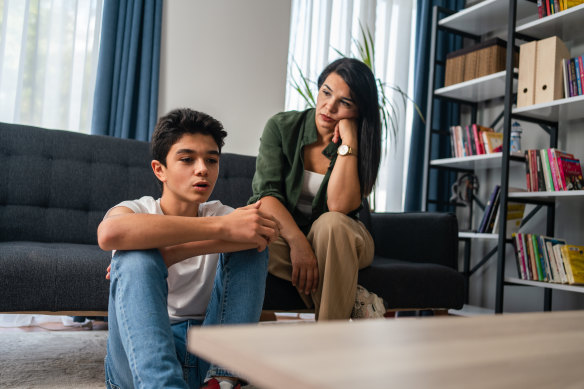This was published 9 months ago
No parent wants to think of their child as a bully. But what if they are?
It’s something no parent ever wants to hear – that their child has been involved in bullying. Unfortunately, the practice remains prevalent in Australia, and parents may find themselves having difficult conversations with their kids, whatever side of the coin they may fall on.
A report from May this year found that Australian students are bullied at rates higher than comparable English-speaking countries, with one in six students saying they had been made fun of at school. The latest figures from UNESCO estimate that one in three students around the world are bullied each day.

Australian school students are bullied at rates higher than comparable English-speaking countries, a recent report found.Credit: Getty Images
What is bullying, and what drives it?
Barbara Spears, an adjunct professor of education and social development at the University of South Australia, says bullying is a learned behaviour that is aggressive, deliberate and intentional.
“It’s designed for the person to achieve some sort of goal,” she says. With younger children, this goal is typically something tangible, such as taking a toy. As children get older, Spears says, it becomes more about soft power.
“It’s often more about the social goals and the relationships around them. It’s about, ‘How can I use my social power to get what I want?’”
There is no one type of bully, nor is there a single factor that drives someone to bully. Dr Marie Yap, a professor and psychologist at Monash University, says research shows the bullied often become bullies themselves. Others, she says, are driven by a sense of satisfaction from asserting power over others. This may be “grounded in some form of insecurity or sometimes a neurochemical inability to empathise with someone else”.
But it’s important to remember that behaviour always exists in a context.
“Schools do not operate in isolation. They are part of the community, and often the aggression of violence and bullying we see in schools is reflecting what is going on around them.
“The challenge then is for parents to look at their own behaviours. If they’re sitting around the coffee table sniping about somebody, is that the sort of behaviour they want their child to be learning?”
Starting young
Children start to become aware of social comparison around the age of seven, explains Spears. It’s important to start having conversations about self-worth, since comparison can lead to conflict.
“Helping them find their place – not in a hierarchy but in finding their own self-worth,” she says.
“These conversations are about always trying to do your best. But realising there are always going to be some people who are a bit faster or bigger or stronger than you in some ways, and you will be better in other ways.”
Teaching children about friendship – that it is not ownership – is also important from a young age.
“Helping children understand they can have multiple friendships – and some can be close and others can be more distant [is essential],” she says. “Setting up that dynamic of who’s in and who’s out is where power dynamics start to happen.”
Yap stresses it’s important to seek professional help, particularly in instances where parents notice patterns of insensitivity or lack of empathy in children. “Intervening as soon as possible is always the advice in such instances.”
Don’t play the blame game
It’s important to adopt a strategy of “no blame” when talking to kids about bullying, says Spears.
“It’s not about blaming them for something that goes wrong because that’s just part of growing up. We all make mistakes.”
She suggests open conversations that help children better navigate conflict.
“[It’s saying], let’s try and understand everybody’s perspectives by standing in the other person’s shoes, sharing the concern of how that person might be feeling, and then trying to find solutions together.”
Yap encourages parents to approach conversations with empathy, particularly in instances where a bullied child has been driven to bully.
“Actually empathising with that very unpleasant, and sometimes even traumatic, experience a child might have had can sometimes go a long way in breaking that cycle.”
Language matters
Language matters, too, when talking about conflict. “Children will often use the words ‘just’ and ‘only’,” says Barbara. “They’ll say, ‘I’m just messing around’, or, ‘we’re only kidding’.
“I suggest that teachers and the parents start eliminating those words from the conversation because they trivialise the behaviours.”
Judging the appropriate time for longer talks – particularly for teens who might be turned off by bigger pep talks – is key, says Yap.
A small comment, such as “I know that you are usually such a caring person”, can go a long way.
“It’s still affirming to them that, ‘I see more in you’ and ‘I’m just calling it out. I’m not going to judge you or criticise you for it, but I know you’re capable of doing better’.”
Kids Helpline 1800 55 1800.
Make the most of your health, relationships, fitness and nutrition with our Live Well newsletter. Get it in your inbox every Monday.